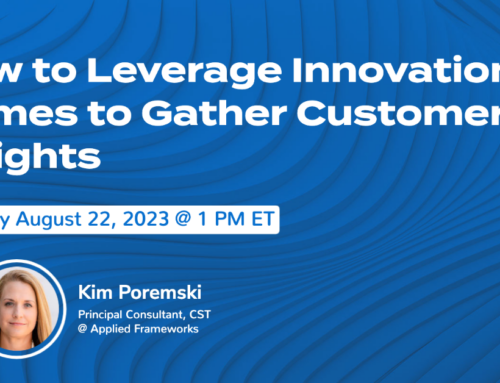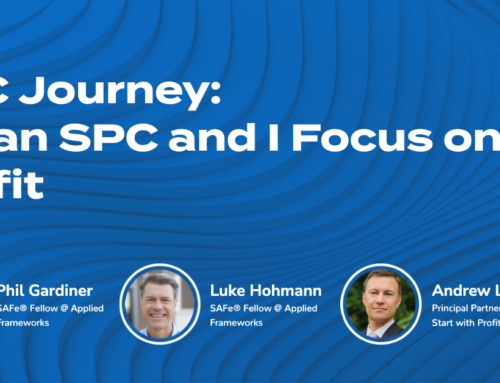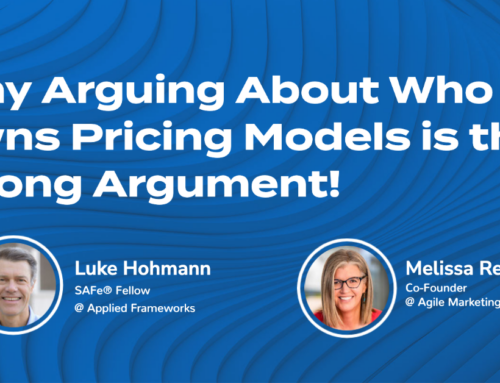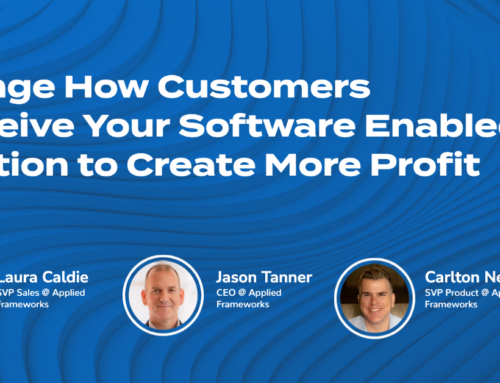Agile transformation often requires the transition of people in the role of Business Analyst to Product Owner. This piece explores the differences between the roles and provides an evolutionary path to becoming a Product Owner.
The Business Analyst role has existed for decades and has continually evolved. Today, the Business Analyst is typically well-versed in business operations and has a relatively deep technical understanding of systems that support the business. The Business Analyst is often associated with more traditional waterfall projects.
A Product Owner is a Scrum role characterized by the ability to own the product vision, to make frequent decisions and to maximize customer value in the execution of that vision.
While some organizations that adopt Scrum retain the Business Analyst role, other organizations move to eliminate the role, often opting to transition individuals to the Product Owner role.
If you are going through Agile transformation, how can you successfully make the shift from Business Analyst to Product Owner? First, we will discuss three key distinctions often observed between these roles, then highlight two frameworks that you can leverage to guide your transition.
Three Differences Between a Business Analyst and a Product Owner
1. PRODUCT OWNERS HAVE A HOLISTIC VIEW OF THE PRODUCT
Business Analysts often have a more limited scope of knowledge of a system or product — the larger the system or product, the narrower the scope. For example, consider a credit card product for a large bank. A business analyst may have in-depth knowledge of the credit scoring functionality including the workflow, algorithms, etc., that support it. However, that same business analyst may know nothing about how credit card statements are created and generated, as that is the subject matter expertise of another business analyst. Conversely, a product owner must have an understanding of the credit card product as a whole. This holistic view enables the Product Owner to shape the product strategy and prioritize future product enhancements.
2. PRODUCT OWNERS LET THE DEV TEAM FIND THE RIGHT TECHNICAL SOLUTIONS
Since Business Analysts tend to be both subject matter experts in their area of knowledge of a product or system and have strong business and technical acumen, they often define technology solutions. However, since Scrum emphasizes self-organization, the Product Owner does not define solutions. Rather, the Product Owner defines WHAT must be delivered and WHY, and the development team determines HOW to deliver. The Product Owner must trust the development team to define the right solutions to achieve a high quality product.
3. PRODUCT OWNERS ARE MORE STRATEGIC THAN TACTICAL
Business Analysts tend to be more inwardly team-focused and are accustomed to developing solutions, hence the role has a more tactical emphasis. A Product Owner’s focus is more strategic. In addition to supporting the Scrum team, Product Owners conduct market and customer research, evaluate market drivers and rhythms, develop a vision for the product that could span several years, create and maintain a product roadmap, develop long-term relationships and have frequent interactions with customers and stakeholders.
With that said, every organization has unique nuances with regard to roles, and every individual brings different knowledge and skills to their business analyst role. Still, the distinctions listed above, while not prescriptive, are quite common.
Now that you understand these distinctions, let’s explore how you can address them by leveraging two frameworks to help guide your transition to a Product Owner role.
Frameworks for Evolving from Business Analyst to Product Owner
FRAMEWORK #1: STOP, START, CONTINUE
Stop, Start, Continue is often used by Scrum teams as a retrospective technique but can very easily be applied to help you identify areas of focus in your role transition.
Stop: Ask yourself…
- What activities do you currently do today that you should no longer do in a Product Owner role? (E.g., write lengthy requirements specifications)
- What mindset shifts do you need to make to be an effective Product Owner? (E.g., shift from dictating solutions to allowing the team to self-organize to develop solutions)
Start: Ask yourself…
- What gaps do I have in my understanding of the bigger picture product vision and what steps can I take to close the gaps?
- What areas of the product or system do I need to discover and what is my plan to learn?
- What artifacts do I need to learn how to create? (E.g., product vision, roadmaps, etc., and how can I learn them?)
- Who do I need to engage to build relationships and how will I start? (E.g., customers, stakeholders, other product owners, etc.)
Continue: Ask yourself…
- What activities should I continue to do in a Product Owner role?
- What skills would I continue to leverage?
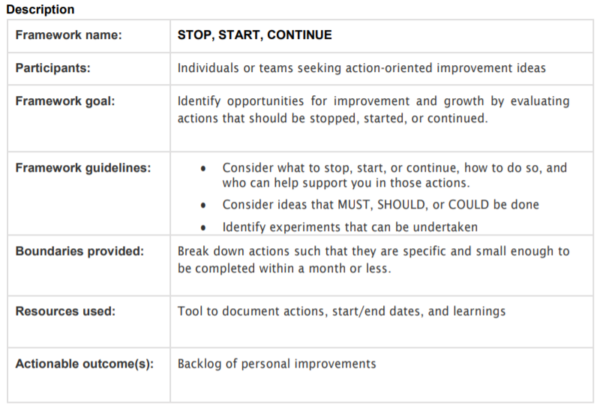
Download Framework Stop, Start, Continue as PDF
FRAMEWORK #2: The 4Cs Map
The 4Cs Map is a framework developed by Sharon Bowman, author of Training From the BACK of the Room. The 4Cs map is a 4-step instructional design and delivery model for creating training plans for a topic you want to teach. This framework can be adapted slightly to help you create a plan for topics you want to learn.
C1 – Connection: Ask yourself…
- What do I want to accomplish this week to support my transition to Product Owner? (Hint: consult your Stop, Start, Continue list!)
- Who should I talk to, shadow, or emulate this week?
C2 – Concept: Ask yourself…
- What techniques or concepts do I need to learn to help me accomplish my weekly goal? (Hint: consult your Stop, Start, Continue list!)
- Who can teach me these concepts?
- What training can I take to learn the concepts?
- What other resources are available to learn more about the concepts?
C3 – Concrete Practice: Ask yourself…
- Now that I understand the concept(s) or technique(s), how can I practically apply this new skill or knowledge?
- Who can I enlist to observe me and provide feedback?
C4 – Conclusion: Ask yourself…
- How did my concrete practice go?
- What would I modify or change the next time I do this?
- How will I continue to leverage and develop this new skill?
- Are there additional items I can add to my Stop, Start, Continue list?
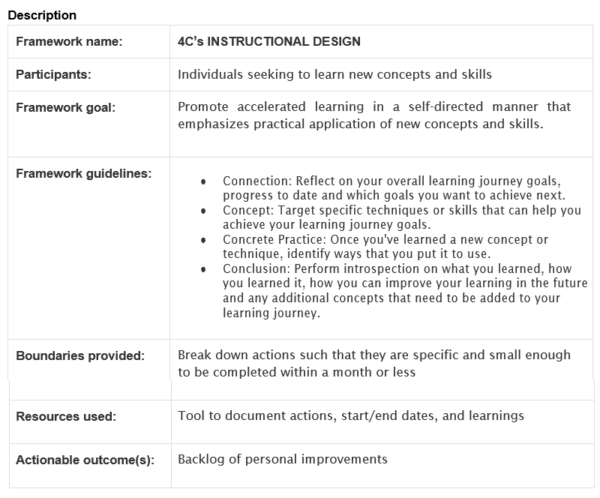
Download Framework The 4Cs Map as PDF
As a Business Analyst, you already possess numerous skills needed to be successful as a Product Owner. By leveraging the frameworks described above to help you shift your mindset away from documenting solutions towards expanding your acumen for product scope and strategy, you can proudly own your career transition and own your product!
ADDITIONAL TRAINING FOR PRODUCT OWNERS
The Scrum Alliance® has developed an education pathway for Product Owners to learn and hone their skills. It begins with an introductory class that will provide you with the Certified Scrum Product Owner® certification, followed by programs leading to the Advanced Certified Product Owner® certification and Certified Scrum Professional – Product Owner® certification. Each program gradually increases in sophistication and depth, and all are available at Applied Frameworks.


